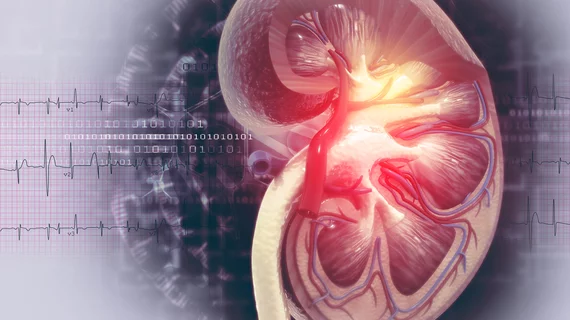ACR, National Kidney Foundation say fears of injury from contrast-enhanced CT unfounded
Two high-profile medical groups are urging radiologists to use contrast agents with confidence when imaging patients suffering from kidney disease.
The American College of Radiology and National Kidney foundation published a joint statement on Tuesday, Jan. 21, defending the use of such imaging enhancements in CT. They note that despite the common use of IV-iodinated contrast media to evaluate kidney disease, their delivery is often “denied or delayed” in patients due to the perceived risk of injury, according to the statement, published in Radiology.
“The historical fears of kidney injury from contrast-enhanced CT have led to unmeasured harms related to diagnostic error and diagnostic delay,” lead author Matthew Davenport, MD, an associate professor of radiology and urology at the University of Michigan, said in a statement. “Modern data clarify that this perceived risk has been overstated. Our intent is to provide multidisciplinary guidance regarding the true risk to patients and how to apply a consideration of that risk to modern clinical practice.”
The ACR and the Kidney Foundation note that radiologists should consider multiple factors when contemplating contrast agent use. Those include probability of an accurate diagnosis, alternative methods to assess the kidney, risks of an incorrect clinical interpretation, and the possibility of an allergic reaction. They also highlight the important distinction between contrast-induced versus contrast-associated kidney injury. In induced injuries, clinicians can establish a causal relationship between the use of contrast agents and patient harm, while associated injuries are absent causation, according to the statement.
They believe “disentangling” these two types is key to quelling patient and provider fears about contrast agent use in CT imaging of the kidney.
“A primary explanation for the exaggerated perceived nephrotoxic risk of contrast-enhanced CT is nomenclature,” Davenport added. “‘Contrast-induced’ acute kidney injury implies a causal relationship. However, in many circumstances, the diagnosis of CI-AKI in clinical care and in research is made in a way that prevents causal attribution.”
The Kidney Foundation and College of Radiology further note that the presence of a single kidney alone should not influence decision making. And doctors should avoid lowering contrast agent dosage below a certain threshold to avoid impairing diagnostic accuracy.
In a corresponding editorial published Tuesday, Boston Children’s Hospital radiologist Harriet Paltiel, MD, further highlighted the safety of using these agents in the pediatric population. Another study, published in August, found no evidence that IV contrast causes renal damage in patients with kidney disease.

